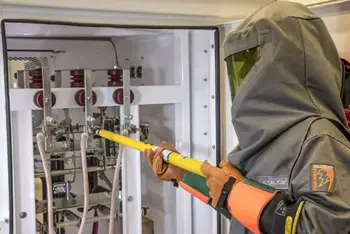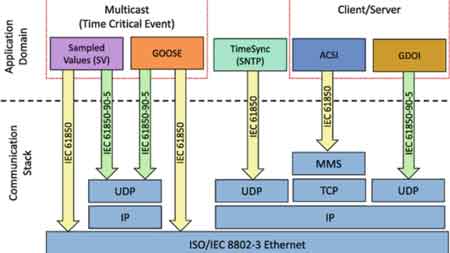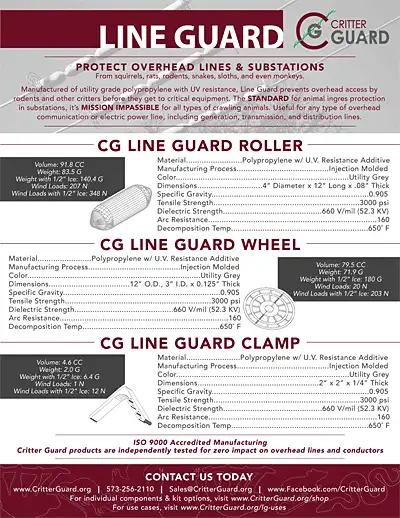To Verify an Electrically Safe Work Condition
By R.W. Hurst, Editor

CSA Z462 Arc Flash Training - Electrical Safety Essentials
Our customized live online or in‑person group training can be delivered to your staff at your location.

- Live Online
- 6 hours Instructor-led
- Group Training Available
Download Our OSHA 3075 Fact Sheet – Understanding Electrical Hazards in the Workplace

- Learn the effects of electric current on the human body
- Understand OSHA safety standards and protective devices
- Discover essential lockout/tagout and grounding practices
To verify an electrically safe work condition, ensure the equipment is fully de-energized and free of hazards. Following NFPA 70E safety protocols helps protect workers from shock, arc flash, and other hazards during electrical maintenance and repair tasks.
To Verify An Electrically Safe Work Condition
In simple terms, an Electrically Safe Work Condition (ESWC) can be summarized as follows:
-
✅ A state where all conductors and circuit parts have been completely de-energized.
-
✅ Achieved by following NFPA 70E's prescribed steps: identifying all power sources, isolating the equipment, verifying absence of voltage, and applying lockout/tagout procedures.
-
✅ Ensures that workers are protected from hazards such as shock, arc flash, and electrocution during maintenance or servicing tasks.
Establishing an electrically safe work condition is a fundamental requirement of the NFPA 70e Standard for Electrical Safety in the Workplace, which outlines procedures to protect personnel from hazards. One critical step involves testing for the presence of induced voltage, which can remain even after equipment is de-energized. This precaution ensures that all potential sources of power are identified and controlled, maintaining a truly safe environment for workers performing maintenance or repair tasks.
What are the Conditions to Verify an Electrically Safe Work Condition?
Before any work begins, it's imperative to confirm that the equipment is in a safe state. This involves ensuring all sources of power are properly isolated and that no residual energy remains. Adhering to the NFPA 70E Standard for Electrical Safety in the Workplace ensures these conditions are met, reducing the risk of hazards.
-
Absence of Voltage: Ensuring that no energy is present.
-
Disconnect Device: Using circuit breakers or other devices to disconnect equipment from all sources of energy.
-
Stored Energy: Releasing or isolating any stored energy within the equipment.
-
Lockout Tagout: Applying lockout/tagout procedures to secure the disconnect devices.
What are the 8 Steps to Establish a Safe Work Condition?
Establishing a safe work condition is a systematic process outlined in the NFPA 70E standard. These steps are designed to eliminate electrical hazards before any servicing or maintenance begins.
Test Your Knowledge About Arc Flash!
Think you know Arc Flash? Take our quick, interactive quiz and test your knowledge in minutes.
- Instantly see your results and score
- Identify strengths and areas for improvement
- Challenge yourself on real-world electrical topics
-
Determine All Possible Sources: Identify and locate all sources of power supply to the equipment.
-
Interrupt the Load: Turn off equipment controls to interrupt the load.
-
Open the Disconnect Device: Use circuit breakers or disconnect switches to open the disconnect device.
-
Verify the Absence: Test for the absence of voltage using appropriate testing instruments.
-
Lockout Tagout: Apply lockout/tagout devices to all disconnect points.
-
Visually Verify: Verify that all disconnecting means are open visually.
-
Release Stored Energy: Discharge or isolate any stored energy.
-
Verify Absence of Voltage Again: Perform a secondary verification to confirm the absence of voltage.
What Shall Be Verified Before Performing Electrical Work?
Even after de-energizing equipment, it's crucial to verify several elements to ensure no residual hazards exist. These verifications align with the NFPA 70E standard and help maintain a safe working environment.
-
The complete absence of voltage.
-
The status of all circuit breakers and disconnect devices.
-
The release of all stored energy.
-
That lockout/tagout procedures are properly applied.
-
That all relevant personal protective equipment (PPE) is available and in use.
Before What Activities Must You Verify an Electrically Safe Work Condition?
Verifying an electrically safe work condition is essential before engaging in any task involving equipment. This practice is a key component of electrical safety in the workplace.
-
Troubleshooting issues.
-
Performing maintenance on equipment.
-
Replacing components.
-
Installing new equipment.
-
Conducting any inspections or tests on power systems.
What Visual Checks Should I Perform?
A thorough visual inspection can identify obvious hazards and ensure all safety measures are in place. These checks are a fundamental part of electrical safety procedures.
-
Damaged or frayed wires and cables.
-
Loose or unsecured connections.
-
Signs of overheating or burn marks on components.
-
Proper placement and security of lockout/tagout devices.
-
Integrity and condition of circuit breakers and disconnect switches.
If I'm Working on De-Energized Equipment, When Can I Skip Verification?
Generally, verifying a safe work condition should never be skipped. However, in rare cases where all power sources have been permanently removed and there's absolutely no chance of re-energization, the verification step may be omitted. This aligns with the principles outlined in NFPA 70E.
-
There is absolutely no chance of re-energization.
-
All sources of supply are permanently disconnected.
What Lockout/Tagout Procedures Must Be Followed?
Lockout/tagout procedures are critical safety protocols mandated by OSHA and detailed in the NFPA 70E standard. These steps ensure that energy sources are fully controlled and that equipment remains de-energized throughout the work process.
-
Identify All Energy Sources: Determine all possible sources of electricity.
-
Notify Affected Personnel: Inform all personnel affected by the shutdown.
-
Turn Off Equipment: Ensure the equipment is turned off and disconnected from all energy sources.
-
Apply Lockout/Tagout Devices: Attach [lockout/tagout devices](https://electricityforum.com/iep
By following these steps and adhering to safe electrical work practices, you can significantly reduce the risk of hazards and create a safer work environment for yourself and others. Remember, verifying a safe work condition is a cornerstone of electrical safety, and prioritizing this process before any task is paramount.
Related Articles








